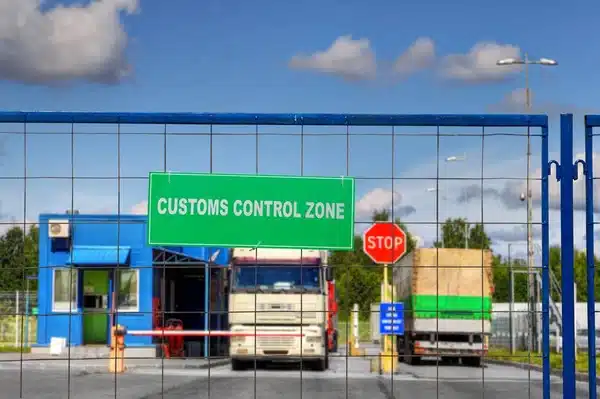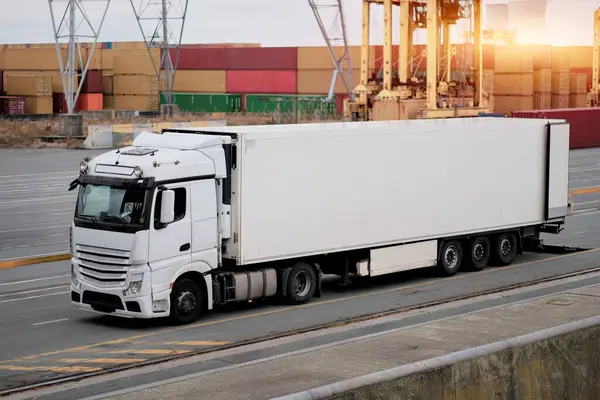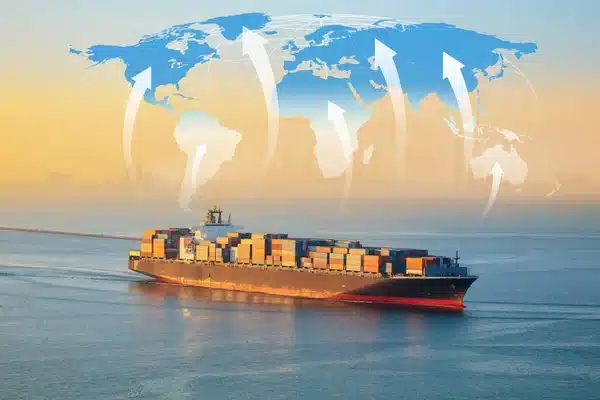Navigating the customs clearance process is a critical step in international shipping. Whether you’re importing goods from China to the USA, EU, UAE, or any other country, understanding how customs clearance works can help you avoid costly delays and ensure compliance with trade regulations. This comprehensive guide breaks down the customs clearance process, the associated costs, and strategies to streamline your operations for a smoother shipping experience.

Table of Contents
What is Customs Clearance?
Customs clearance is the formal procedure of ensuring that goods entering or leaving a country comply with the applicable laws and regulations. It involves:
- Document Preparation: Submitting required documents like the commercial invoice, packing list, and bill of lading.
- Compliance Checks: Ensuring the goods meet import/export standards, including health, safety, and environmental regulations.
- Duty and Tax Payment: Calculating and paying customs duties, taxes, and other applicable fees.
- Goods Approval: Securing approval from customs authorities for the shipment to proceed to its destination.
This process is essential for both importers and exporters to avoid delays, penalties, or confiscation of goods.
How to Do Customs Clearance
Customs clearance ensures that goods comply with international trade regulations, duties and taxes are paid, and all necessary documentation is accurate and complete. The process involves the following steps:
1. Preparing Documentation
- Essential Documents:
- Commercial Invoice: Specifies the value, quantity, and nature of the goods.
- Packing List: Details the shipment’s contents, including weight and dimensions.
- Bill of Lading (BOL) or Airway Bill (AWB): Proof of shipment and carrier information.
- Certificate of Origin: Confirms the product’s country of manufacture, required for certain trade agreements.
- HS Code Classification: Determines applicable duties and taxes based on the product type.
2. Submitting Documents
- Submit all required documents to the customs authority of the importing or exporting country.
- Ensure that the information matches across all documents to avoid discrepancies.
3. Duties and Tax Payment
- Calculate customs duties and taxes based on the shipment’s value and HS code.
- Pay applicable fees promptly to avoid delays.
4. Compliance Check
- Customs authorities verify the documents and may inspect the goods for compliance with regulations (e.g., health, safety, or trade restrictions).
5. Clearance Approval
- Once customs approve the shipment, the goods are cleared for delivery to their destination or for export.
6. Delivery or Export
- After clearance, the goods proceed to their final destination via the arranged logistics method.
Key Tips:
- Use a Customs Broker: For complex shipments, hiring an experienced broker can simplify the process and reduce errors.
- Plan for Inspection: Allocate extra time in case customs selects your shipment for inspection.
- Track Documentation: Keep copies of all submitted documents for reference and dispute resolution.

Preparing Customs Clearance Documents
To successfully complete the customs clearance process, it’s essential to prepare and provide accurate documentation. Below are the commonly required documents for customs clearance:
1. Commercial Invoice
- Purpose: Details the value, quantity, and description of goods.
- Key Elements:
- Seller and buyer information.
- Terms of sale (e.g., FOB, CIF).
- Currency and total transaction value.
2. Packing List
- Purpose: Provides detailed information about the shipment contents for customs and logistics.
- Key Elements:
- Weight, dimensions, and number of packages.
- Description of items in each package.
- Marks or labels for package identification.
3. Bill of Lading (BOL) or Airway Bill (AWB)
- Purpose: Serves as proof of shipment and transportation details.
- Key Elements:
- Shipper and consignee information.
- Origin and destination of goods.
- Carrier details and shipment tracking information.
4. Certificate of Origin (CO)
- Purpose: Verifies the country of manufacture, which can impact applicable duties or trade agreement benefits.
- Key Elements:
- Issued by a recognized trade authority or chamber of commerce.
- Must match product details on the commercial invoice.
5. HS Code Classification
- Purpose: Harmonized System (HS) codes are used to classify goods and calculate duties and taxes.
- Key Elements:
- A six-to-ten-digit code for each product.
- Determines applicable tariffs, quotas, and import/export restrictions.
6. Import Licenses
- Purpose: Required for restricted goods, such as pharmaceuticals, electronics, or hazardous materials, in some countries.
- Key Elements:
- Must align with the product and destination country’s specific regulations.
- May involve pre-clearance approval.
7. Other Possible Documents
- Insurance Certificate: For high-value goods requiring proof of coverage.
- Health Certificates: Required for agricultural products or food.
- Sanitary or Phytosanitary Permits: Necessary for items like plants, seeds, or livestock.
Detailed Steps for Importers in the Customs Clearance Process
Pre-Shipment Preparation
- Confirm HS Codes and Duty Rates:
- Identify the correct HS code for your product to determine applicable duties and taxes.
- Verify country-specific duty rates and any potential exemptions under trade agreements.
- Accurate Documentation:
- Prepare a detailed commercial invoice and packing list with precise product descriptions and values.
- Confirm compliance with labeling and certification requirements for the destination country.
- Check Import Restrictions:
- Ensure the product is not restricted or requires special permits in the importing country.
- Obtain necessary import licenses or pre-clearance approvals for regulated goods.
Arrival of Goods
- Customs Declaration:
- Goods are officially declared upon arrival at the destination customs office or port of entry.
- Submit required documentation, including the commercial invoice, bill of lading (BOL), and certificate of origin.
- Customs System Entry:
- The shipment details are entered into the customs system for processing and evaluation.
Inspection and Verification
- Document Review:
- Customs officers check the submitted documents for consistency and accuracy.
- Physical Inspection:
- Shipments may undergo physical inspection to ensure compliance with regulations.
- Items flagged for irregularities or high-risk goods are more likely to be inspected.
- Verification of Compliance:
- Authorities verify adherence to safety, health, and environmental standards for the goods.
Payment of Duties and Taxes
- Calculation of Duties:
- Customs calculates duties, VAT/GST, and any other applicable taxes based on the HS code and declared value.
- Payment Process:
- Importers or their agents must pay duties and taxes through authorized channels.
- Delayed payments can lead to storage fees or demurrage charges.
Release of Goods
- Approval and Clearance:
- Once documentation, inspections, and payments are complete, customs provides clearance approval.
- Delivery Authorization:
- Goods are released for pickup or delivery to the consignee’s address.
- Importers can arrange final-mile delivery or warehouse storage as needed.

What Does the Customs Clearance Fee Include?
Customs clearance fees are the charges associated with the administrative processes and services required to move goods across international borders. These fees cover various tasks and requirements, including handling documentation, inspections, and compliance checks. Here’s a detailed breakdown:
1. Broker Fees
- Description: Payment made to customs brokers for managing the customs clearance process on behalf of importers or exporters.
- Services Included:
- Filing customs declarations.
- Ensuring compliance with local regulations.
- Communicating with customs authorities.
- Typical Cost Range: $50–$200 per shipment, depending on complexity and region.
2. Inspection Fees
- Description: Charges for physical or x-ray inspections conducted by customs to verify the shipment’s contents and compliance.
- When Applicable:
- Random inspections.
- Shipments flagged for irregularities or high-risk items.
- Typical Cost Range: $20–$100, depending on the type and scope of inspection.
3. Storage Fees
- Description: Costs incurred if goods are held at customs due to delays in documentation, inspections, or payments.
- Details:
- Charged per day after a specified free storage period (e.g., 3–7 days).
- Rates vary by port, airport, or warehouse.
- Typical Cost Range: $10–$50 per day per container or shipment.
4. Documentation Fees
- Description: Fees for preparing, processing, or amending shipping documents required for customs clearance.
- Common Documents:
- Commercial invoice.
- Bill of lading (BOL) or airway bill (AWB).
- Certificate of origin (CO).
- Typical Cost Range: $30–$100 per document, depending on revisions or additional requirements.
5. Duty and Tax Calculation Fees
- Description: Service charges for calculating import duties, VAT, and other taxes based on HS codes and declared value.
- Typical Cost Range: Included within broker fees or charged separately at $20–$50.
6. Administrative Fees
- Description: General fees for processing the customs entry and coordinating with customs authorities.
- Typical Cost Range: $25–$75 per shipment.
Other Potential Fees
- Demurrage Charges: Costs for exceeding the free time allotted for container usage at the port.
- Quarantine or Biosecurity Fees: Charges for inspection and certification of agricultural or perishable goods.
Types of Customs Duties
Customs duties are taxes imposed by governments on goods being imported or exported. These duties can vary based on the nature of the goods, their origin, and the purpose of the duties. Here’s a detailed breakdown of the main types of customs duties:
1. Ad Valorem Duties
- Definition: These duties are calculated as a percentage of the value of the goods being imported or exported.
- Characteristics:
- The most common type of duty used globally.
- The value of the goods is determined based on the invoice price, insurance, and freight costs (CIF value).
- Example:
- A 10% ad valorem duty on a shipment valued at $10,000 would result in a duty of $1,000.
- Application: Common for goods like electronics, apparel, and machinery.
2. Specific Duties
- Definition: These are fixed amounts charged per unit of goods or per weight, regardless of the value.
- Characteristics:
- Provides predictability in customs revenue.
- Often used for goods that are uniform in size or weight, such as agricultural products.
- Example:
- $50 duty on each unit of an imported television or $5 per kilogram of imported sugar.
- Application: Typical for bulk commodities like grains, fuel, or alcohol.
3. Compound Duties
- Definition: A combination of ad valorem and specific duties, applied together.
- Characteristics:
- Used to balance revenue and protect local industries.
- Includes both a percentage of the value and a fixed amount per unit or weight.
- Example:
- A 5% ad valorem duty plus $2 per kilogram on imported steel.
- Application: Often applied to products like vehicles, luxury goods, or high-tech items.
4. Anti-Dumping Duties
- Definition: These duties are levied to counteract the dumping of goods, where foreign manufacturers export goods at a price lower than their domestic market value.
- Purpose:
- Protects local industries from unfair competition.
- Ensures a level playing field for domestic producers.
- Example:
- If imported solar panels are found to be sold below cost price, an anti-dumping duty may be applied to equalize the market.
- Application: Common in industries like steel, textiles, and renewable energy products.
How Customs Duties Impact Shipping
- Cost Implications: High duties can significantly increase the landed cost of goods, affecting pricing strategies and profitability.
- Compliance Needs: Accurate HS code classification is essential to determine the correct duty type and rate.
- Trade Agreements: Preferential or zero-duty rates may apply for goods imported from countries with free trade agreements.
Example Application by Country
- USA: Primarily uses ad valorem duties; anti-dumping duties are common for industries like steel and electronics.
- Germany: Follows EU regulations with a mix of ad valorem and specific duties, plus VAT on imports.
- Russia: Applies compound duties for goods like vehicles and high-value machinery.
- UAE: Ad valorem duties are standard, with low rates (typically 5%) to encourage trade.
- Turkey: Protective tariffs on textiles and agricultural goods, often paired with anti-dumping duties.
- Nigeria: Higher specific and compound duties on consumer goods to protect local industries.
- Australia: Uses specific duties on items like alcohol and tobacco, with ad valorem duties for most goods.
Understanding the types of customs duties and their applications helps businesses better navigate international trade and accurately calculate costs for importing goods.
How to Calculate Customs Duties
Accurately calculating customs duties is essential for determining the total cost of importing goods. Below is a step-by-step guide to help you compute these costs effectively:
Determine the HS Code
- What is it?
The Harmonized System (HS) code is a globally recognized classification for goods. Each product has a unique HS code that determines the applicable duty rates. - How to find it:
- Consult product documentation or consult your supplier.
- Use online HS code search tools provided by customs authorities in your country.
Research Duty Rates
- Why it matters:
Each HS code is linked to specific duty rates that vary by country and trade agreement. - Where to check:
- Your country’s official customs website.
- Free Trade Agreements (FTAs) that may reduce or eliminate duties.
- Consult a customs broker for accurate rates.
Duty Calculation Formula
To calculate customs duties, use the following formula:
Customs Duty=CIF Value×Duty Rate
- CIF Value (Cost, Insurance, Freight):
This is the total value of the goods, including:- Cost of the goods (invoice value).
- Insurance (if applicable).
- Freight (shipping charges).
- Duty Rate:
The percentage rate applied to the CIF value, determined by the product’s HS code.
Example Calculation
Scenario:
- Product: Electronics.
- CIF Value: $10,000 (Cost: $9,000 + Insurance: $500 + Freight: $500).
- Duty Rate: 10%.
Calculation:
Customs Duty=10,000×0.10=1,000
- Total customs duty = $1,000.
Confirm Costs with a Broker
- Why it’s important:
Customs brokers can ensure accuracy by considering additional factors like:- Seasonal variations in rates.
- Special tariffs or anti-dumping duties.
- How to consult:
Provide them with the HS code, invoice, and shipping details for a precise estimate.
Additional Considerations
- VAT/GST:
Add VAT or GST, which is calculated on the sum of the CIF value + customs duty. - Exemptions:
Check for duty exemptions under specific trade agreements or thresholds (e.g., duty-free imports for goods under $800 in the USA).

How to Improve Customs Clearance Efficiency
- Pre-Verify Documentation: Avoid errors by double-checking all forms.
- Use Technology: Invest in software that automates declarations and tracks shipments.
- Partner with Experts: Work with reliable customs brokers or freight forwarders.
Costs Associated with Customs Clearance
Customs clearance costs vary depending on the shipment’s nature, destination, and regulatory requirements. Below is a detailed breakdown of common costs:
Duties and Taxes
- What it Includes:
- Calculated based on the shipment’s CIF value (Cost, Insurance, Freight).
- Determined by the product’s HS code and applicable duty rates.
- Average Rates:
- Ad Valorem Duties: A percentage of the CIF value (e.g., 5–20%).
- VAT/GST: Typically 10–25%, depending on the country.
Brokerage Fees
- What it Includes:
- Fees paid to customs brokers for filing declarations and managing the clearance process.
- Range:
- $50–$500, depending on the complexity of the shipment.
- Factors Influencing Cost:
- Size and type of shipment.
- Additional paperwork for restricted or high-value items.
Inspection Fees
- What it Includes:
- Charges for physical or x-ray inspections performed by customs officials.
- Costs:
- Standard Inspections: $100–$300.
- Special Inspections: Can go higher for hazardous or restricted goods.
- Frequency:
- Common for electronics, agricultural goods, and high-value shipments.
Demurrage and Storage Fees
- What it Includes:
- Charges for containers or goods stored at the port or warehouse due to delayed pickup.
- Costs:
- Demurrage: $50–$200 per container per day after the free period.
- Storage: Based on weight, volume, and duration.
- Free Time:
- Usually 3–7 days, depending on the port or shipping line.
Documentation Fees
- What it Includes:
- Fees for preparing or revising customs-related documents, such as:
- Bill of Lading (BOL).
- Certificate of Origin.
- Export or Import Declarations.
- Fees for preparing or revising customs-related documents, such as:
- Costs:
- $30–$100 per document.
Country-Specific Examples
- USA:
- Duties: 0–25% depending on the product.
- Customs Broker Fee: Starts at $100 for simple shipments.
- Germany:
- VAT: 19%.
- Inspection Fees: Higher for goods requiring CE certification.
- UAE:
- VAT: 5%.
- Demurrage: Particularly high at Jebel Ali Port for delayed pickups.
- Australia:
- GST: 10%.
- Quarantine Inspections: Extra fees for agricultural products.
Tips for Reducing Customs Costs
Accurate HS Codes
- Ensure your goods are classified with the correct Harmonized System (HS) codes to avoid penalties, delays, or incorrect duty calculations.
Plan Shipments Strategically
- Avoid shipping during peak seasons like Chinese New Year or Black Friday to reduce congestion-related fees and delays.
- Opt for efficient ports with faster processing times.
Choose DDP (Delivered Duty Paid) Services
- Simplify your logistics by selecting DDP services where duties, taxes, and customs clearance are managed as part of a single package.
Consolidate Shipments
- Combine smaller orders into fewer shipments to reduce handling fees, storage costs, and the number of customs declarations.
Why Choose Tonlexing for Customs Clearance?
Global Expertise
End-to-End Solutions
- From preparing documentation to ensuring timely delivery, Tonlexing handles the entire customs clearance process seamlessly.
Transparent Pricing
- Receive detailed breakdowns of all costs, ensuring there are no hidden fees.
Efficient Processes
- Avoid delays with streamlined procedures and proactive issue resolution, reducing storage fees or penalties.
Contact Tonlexing today for comprehensive customs clearance and optimized logistics solutions that ensure your goods are delivered efficiently and cost-effectively!


